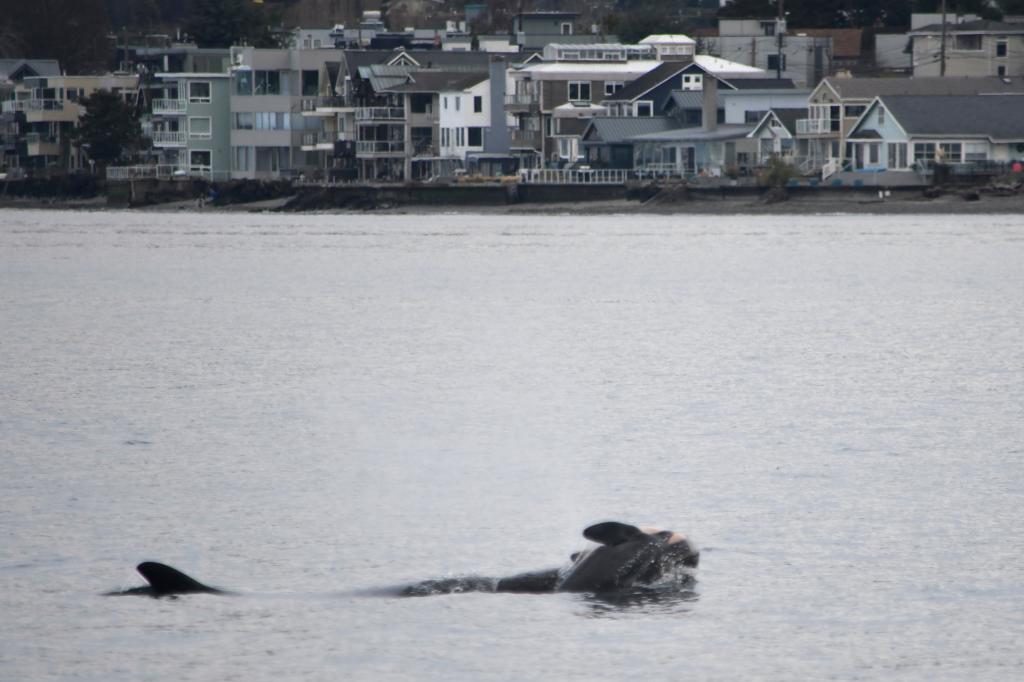The waters of the Pacific Northwest have once again become a stage for a poignant display of grief, as Tahlequah, a Southern Resident killer whale designated J35, mourns the loss of her newborn calf, J61. This heart-wrenching scene echoes a similar tragedy from 2018, when Tahlequah carried her deceased calf for 17 days in a widely publicized “tour of grief.” This time, the grieving mother has been observed carrying her latest deceased offspring on her back, mirroring the behavior that captivated the world seven years prior. The repetition of this unusual mourning ritual has both saddened and intrigued scientists, prompting questions about the underlying reasons for Tahlequah’s prolonged displays of grief.
J61, a female calf, lived for only approximately a week before her untimely demise. This represents the second loss for Tahlequah out of four documented births, both of which were female calves. The loss of J61 is particularly devastating given the endangered status of the Southern Resident killer whales and the potential she represented for contributing to the population’s recovery. Female orcas play a crucial role in the social structure and reproductive success of their pods, often leading their own matrilines. Tahlequah’s persistent mourning behavior underscores the deep emotional bonds within orca families and the profound impact of calf mortality on these highly intelligent and social creatures.
While carrying her deceased calf, Tahlequah is unable to forage for food, diverting her energy and attention to this poignant act of remembrance. Her pod members, including her sister, have been observed staying close to her side, offering support during this difficult time. This collective grieving further highlights the complex social dynamics within orca pods and the importance of familial bonds in coping with loss. The Southern Resident killer whales, a community inhabiting the waters off Washington state and British Columbia, Canada, are facing significant challenges to their survival, and the death of J61 represents a setback for the already fragile population.
The reasons behind J61’s death remain uncertain, though scientists suspect prematurity as a possible factor. Neonatal mortality rates are high among orcas, with approximately 50% of calves failing to survive their first year. This vulnerability highlights the precariousness of orca calf survival and the numerous threats facing this endangered population, including dwindling food sources, pollution, and vessel noise. The loss of each calf represents a significant blow to the long-term viability of the Southern Resident killer whales.
Amidst the sorrow surrounding J61’s death, there is a glimmer of hope for the Southern Resident killer whales. Another calf was recently born within the pod, offering a brief respite from the prevailing grief. While the sex and mother of this newborn are still unknown, the calf appears healthy and active, providing a small measure of optimism for the future of this endangered population. The simultaneous occurrence of birth and death within the pod underscores the cyclical nature of life and the ongoing struggle for survival faced by these magnificent creatures.
The story of Tahlequah and her deceased calves serves as a stark reminder of the challenges confronting the Southern Resident killer whales. Their precarious existence highlights the urgent need for conservation efforts to protect these iconic animals and their fragile ecosystem. The ongoing research and monitoring conducted by organizations like the Center for Whale Research are crucial for understanding the complex factors influencing orca survival and informing effective conservation strategies. The hope remains that through continued research, dedicated conservation efforts, and increased public awareness, the Southern Resident killer whales can overcome the threats they face and thrive once again in the waters of the Pacific Northwest. The future of this endangered population hangs in the balance, and it is imperative that we act now to ensure their survival for generations to come.

